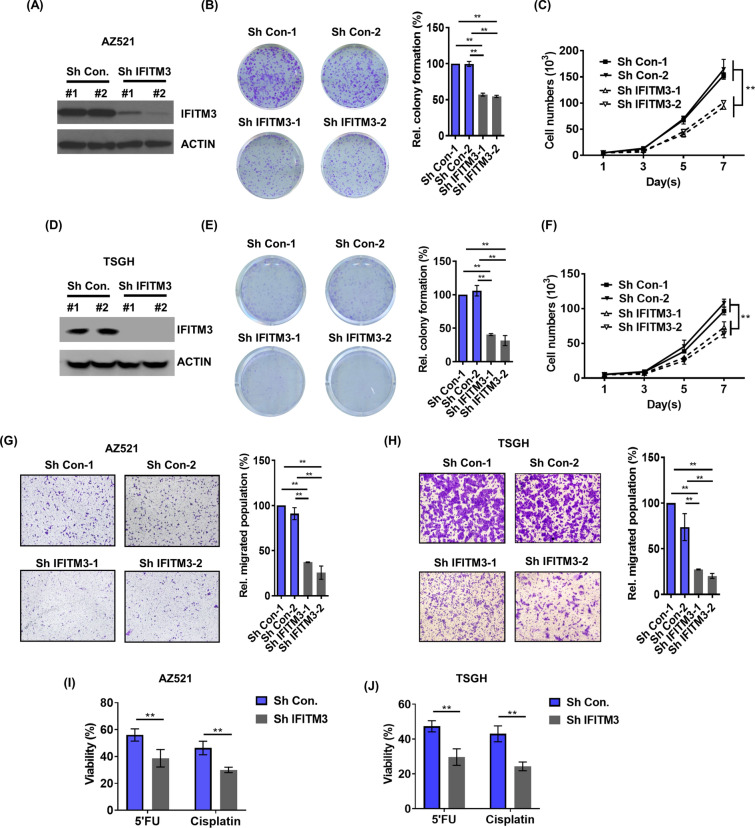Fig. 2.
IFITM3 depletion suppresses colony-formation, proliferation, metastasis and chemoresistance properties of GC cells. A, D) The efficiency of IFITM3 silencing in AZ521 and TSGH cells was determined by western blots. B, E The left panels show a representative image of the colony formation assay from each treatment group from crystal violet staining. The right panel are the quantitative analyses of the colony formation assays conducted (**p < 0.01). C, F Cellular viability of the two GC cell lines that had been infected with IFITM3 shRNAs were analyzed by viable cell counts (**p < 0.01). G, H Transwell migration assays of IFITM3-silenced AZ521 and TSGH cells, respectively. Left panels are representative transwell migration staining images from each group; the right panels show the quantitative analyses on migrated cells (**p < 0.01). I, J Chemosensitivities of 5’FU or cisplatin-treated AZ521 and TSGH cells, respectively, that were shCon- or shIFITM3-infected. The cellular viabilities (%) were determined based on the relative numbers of viable cells after treatment with 5’FU (20 μg/ml) or cisplatin (3 μM) for 72 h using MTS assay

